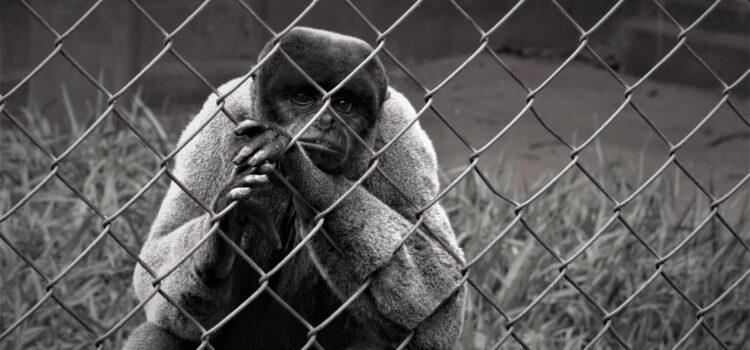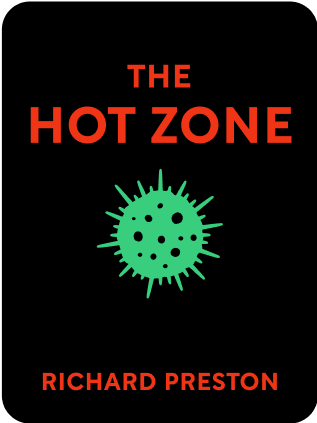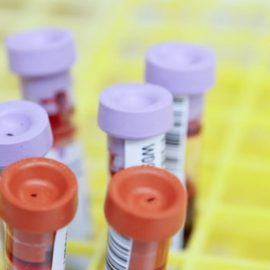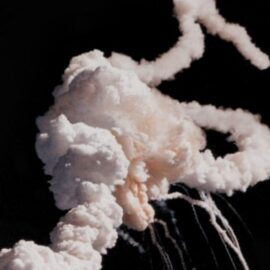

This article is an excerpt from the Shortform summary of "The Hot Zone" by Richard Preston. Shortform has the world's best summaries of books you should be reading.
Like this article? Sign up for a free trial here .
Who is Dr. Nancy Jaax? What was her role in containing and researching the Ebola virus?
Dr. Nancy Jaax was an army veterinarian and researcher who was one of the first to work with infected monkeys during the US outbreak of Ebola Reston.
Read more about Dr. Nancy Jaax and her role in Ebola research and containment.
Dr. Nancy Jaax’s Close Call
One researcher in Johnson’s Ebola experiments was Major Nancy Jaax, an army veterinarian who was training in veterinary pathology. When monkeys died in the experiment, Jaax’s job was to find out what had killed them—essentially confirming that Ebola was the cause of death.
One day, Dr. Nancy Jaax entered the monkey room to find and inspect two monkeys that had crashed and bled out. While working on one of the dead monkeys, Jaax noticed a hole in her glove. She panicked. Jaax’s glove had been covered in the infected monkey’s blood—and worse, she had a deep cut in the palm of that hand from a kitchen accident the night before.
Jaax rushed to the decontamination shower, then tore off her suit and carefully inspected the first of her three layers of hand protection, the latex glove that directly covered her skin. She saw blood under the glove, but couldn’t yet tell if it was the monkey’s or her own.
Dr. Nancy Jaax filled the glove with water and watched for any leaks, but the glove held. She was safe.
Dr. Nancy Jaax Studies Ebola’s Airborne Potential
Throughout Johnson’s experiments, none of the drugs worked. Every infected monkey died of the disease.
Eventually, even the two control monkeys who researchers hadn’t infected also caught the virus and died. They’d been kept in their cages, away from all the other monkeys, which should have kept them healthy because researchers believed the virus only traveled via direct contact with bodily fluids.
However, somehow the monkeys had been infected. Jaax believed that when the monkeys’ cages were cleaned, the moisture mixed with the sick monkeys’ spit and other fluids on the cages’ surfaces and created an aerosol of droplets. Dr. Nancy Jaax theorized that the aerosol allowed the virus to become airborne.
Army Officials Formulate a Plan
Jahrling’s tests showed that the monkey samples reacted to Ebola Zaire, meaning that the blood sample of an Ebola Zaire victim glowed under ultraviolet light when it mixed with virus cultures made from the monkeys. The glow signaled that the virus in the culture was the same or similar to the virus in the victim’s blood sample.
The tests weren’t proof positive that the virus was Ebola Zaire. This virus could be something closely related—something new and unknown.
When Russell, Peters, Huxsoll, Jahrling, and Jaax met, they tried to get a grasp of what they were dealing with and what they were going to do about it. Russell was alarmed at the possibility of an Ebola outbreak in a suburb of Washington, DC.
Worse yet, Dr. Nancy Jaax told him about two incidents that suggested the virus could be airborne:
- The two control monkeys in the Ebola experiment she’d helped with had died from the virus, despite having no contact with infected monkeys.
- Johnson subsequently conducted an experiment in which he had monkeys inhale fairly small amounts of the virus, and they became infected.
The group considered the options. There are three ways to stop a virus:
- Vaccines, but none existed for Ebola
- Drug treatments, but none existed for Ebola
- Biocontainment, which would be their only option
One way to achieve biocontainment would be to cut off the Reston facility from the world, allow the virus to spread and kill the monkeys, and potentially quarantine all the employees who’d been exposed. But Option 1 would mean allowing the monkeys to suffer as they died off, and it wouldn’t give the researchers an opportunity to collect samples to study.
Option 2 was to enter the facility—a Level 4 hot zone. They would kill, collect samples from, and incinerate the monkeys, and then sterilize the entire building with chemicals.
Infected Monkey Samples Cause More Confusion for Dr. Nancy Jaax
Soon after, Johnson, Jaax, and Peters arrived at Dalgard’s office. Dr. Nancy Jaax viewed a sample from one of the dead monkeys under a microscope, and she saw that the cells looked like bricks that were bursting with replicated virus particles, a signature sign of Ebola.
The Army officials wanted more samples, so Dalgard had Volt give them the carcasses of several monkeys that had died the night before.
Jaax, Johnson, and Peters transported the infected carcasses to USAMRIID, where Dr. Nancy Jaax took them into the Level 4 hot zone to dissect. When she cut into the first one, she found:
- Eyes that were not red (red eyes would have been a telling symptom of a filovirus)
- An enlarged, leathery spleen
- Some bleeding spots where the stomach met the small intestine
Some of the characteristics looked like Ebola, but it was far from a dead ringer—the organs hadn’t liquified and there was little to no hemorrhaging. Jaax couldn’t confirm that they were dealing with Ebola based on this carcass. She’d need more samples.
Dr. Nancy Jaxx Prepares for the Reston Sterilization Mission
Dalgard decided to allow the Army into the monkey house to clear out one of the rooms.
Peters tapped Nancy Jaax’s husband, Colonel Jerry Jaax, to lead the mission into the Reston facility. Jerry Jaax was the chief of USAMRIID’s veterinary division. Although he had no experience with extreme biohazard agents, he and his team knew well how to handle monkeys.
Jerry Jaax conferred with Johnson about how to approach the mission. They’d have to be extremely careful while sterilizing Reston to prevent the virus from escaping and spreading.

———End of Preview———
Like what you just read? Read the rest of the world's best summary of Richard Preston's "The Hot Zone" at Shortform .
Here's what you'll find in our full The Hot Zone summary :
- The many different strains of Ebola, including the deadliest kind with a kill rate of 90%
- How scientists unraveled the mystery of a new strain of Ebola
- How Ebola could become airborne, becoming one of the deadliest viruses known






